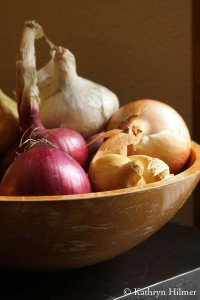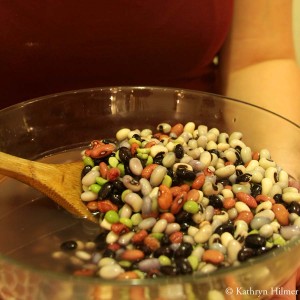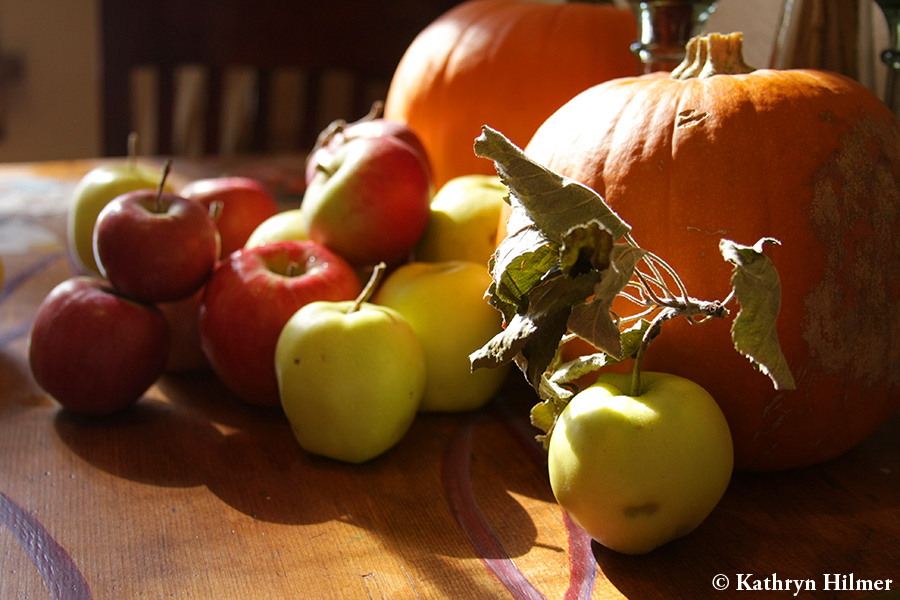
I read somewhere recently that a person goes through several stages when learning to cook. First, you choose a recipe and follow it (I would preface that with another stage some of us go through: buying a box dinner and following the instructions on back). In the middle stages, you use recipes as a guideline but do a bit of improvisation. In the last stage (in which I suppose you reach some sort of kitchen nirvana) you disregard the recipe books completely, inventing one in your head as you look at the ingredients at hand.
But that’s coming from a professional chef. For the rest of us, the model is little more dynamic—not necessarily a ladder of cooking hierarchy. I myself exist mostly in the second stage but spend some time in stages one and three depending on my cravings, my energy level and the food in my kitchen. Who can safely say they fall into only one category? Maybe you’ve been making your own granola for years but it never occurred to you that not all mac n’ cheese comes from a box. I remember when I first decided to make tomato sauce myself. I used canned tomatoes at first instead of fresh, sure, but there’s no problem with that. At least I was thinking outside the jar of ready-made marinara.

When you decide to make that jump from ready-made to homemade, it helps to have an arsenal of ingredients at your disposal. And once you have some staples, you’ll save money by taking less trips to the grocery store. It’s an initial investment that might seem like a lot, but will save you loads in the end. Of course a big bag of flour, some butter, salt, and yeast is going to cost more than a loaf of bread. But you’ll be able to make a lot more than one loaf out of those ingredients.
It’s difficult to say what you should stock your kitchen with, since we all have different food preferences. I’ve opted not to list the contents of my fridge and pantry…that is perhaps fodder for another article or a blog post. Googling “kitchen staples” brings up a lot of hits, and this website has a comprehensive list you can glean some ideas from. It’s likely you already have a lot of these things, which is great. If not, you don’t have to toss everything you have and start all over. Pick something you want to make and go buy the ingredients (fresh tomato sauce, for example). Buying extra of the non-perishable stuff means you’ll have leftovers for next time—weapons for your kitchen arsenal.
And next time you’re staring down a wall of salad dressings and sauces at the grocery store, mull this over: Grocery stores are packed with products touting their ingenuity and convenience. Most of us grew up eating the stuff and gave little thought its contents. The fact is, you can make most of these things easily at home from scratch. Plus, your version will be likely be fresher and better tasting. To name a few from the fridge:
- salsas
- salad dressings
- tartar sauce
- pickle relish
- stir fry and barbeque sauces
- fancy spreads and flavored cream cheeses

If Ian and I like a particular brand of sauce or salsa, we look at the ingredients list and see if we can replicate it at home. And most of the time we can. If you take your average all-purpose seasoning and look at the ingredients, you’ll likely see salt, garlic, onion maybe some pepper and oregano. It doesn’t take a genius to figure out you can make that combo on your own, and without the msg and the anti-caking agent. It’s like boxed pancake mix that requires you to add milk, oil, and eggs. So what’s the magical mix in the box? Flour, baking powder, and salt. Oh, and hydrogenated oil, which is banned in Canada and most European countries.
No matter where you stand on the ladder, it’s easy to find something to make homemade that you hadn’t thought of before. Eliminating the need for packaged and processed foods feels great…it means freeing yourself from kitchen clutter, material waste, and the harmful contents of those products. Plus, when someone compliments you on your biscuits or salad dressing, you get to take all the credit. It tastes way better too, but don’t take my word for it. Get in the kitchen and start experimenting!

